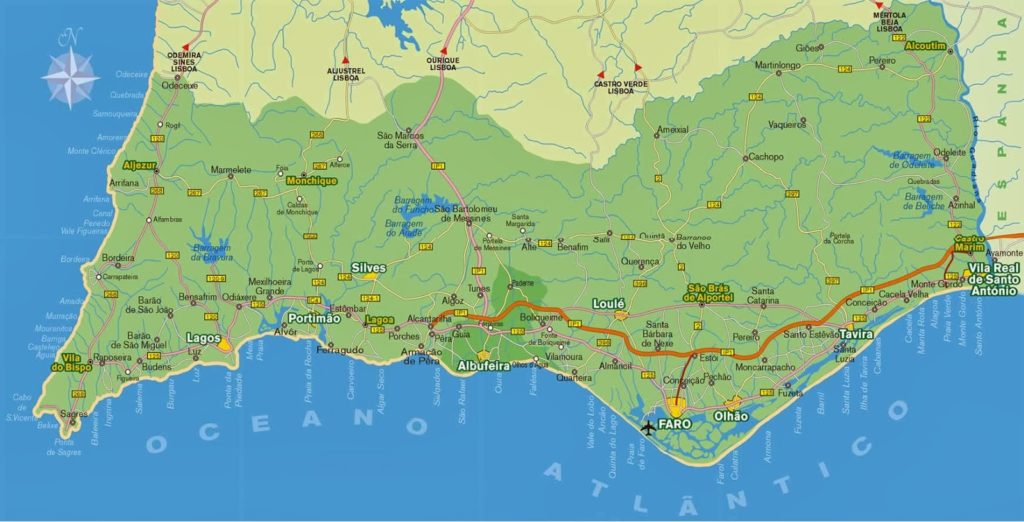One of the central topics of the 2030 agenda refers to what I designate as the points of regionalization, that is, the interactive dynamic between the regional (NUTS II) and sub-regional (NUTS III/CIM) levels of government and administration and, in particular, as a result of this interaction, the evolution of the intermunicipal community (CIM) towards a new interurban configuration that I call here city-region.
Let's see some critical points of this dynamic and also some principles of reform of the decentralization-regionalization binomial.
We already know that the digital transformation triggers a growing disintermediation and dematerialization of territorial administration and that political society, on the contrary, feels increasingly isolated and confined within the territorial limits of its electoral legitimacy; this imbalance pushes political society to the defensive and is at the origin of many mistakes in the decentralization-regionalization binomial.
We already know, too, that a territorial approach from the perspective of networks – centralized, decentralized and distributed – can be applied to the cities of the future and, in particular, to the city-region as a polycentric, distributed and collaborative network.
We already know that the investment made in smarting the territory is decisive; on a first level, the simple optimization of resources in the provision of public services, on a second level, the creation of an intelligent environment in the education-teaching-training of the entire population, on a third level, the promotion of digital platforms made in with a view to creating a more participatory and collaborative local society, and finally, the creation of an integrated digital ecosystem oriented towards the territorial development strategy of the city-region.
We also know that the decentralization-regionalization binomial depends a lot on the political-administrative evolution of the intermunicipal communities (CIM) themselves, in particular, within the scope of law nº50/2018, which transfers attributions and powers to the municipalities and the CIM.
Beyond this transfer, it is important to know whether the municipalities themselves wish to evolve towards a genuine inter-municipal federalism, a new level for a government of the commons and a true desired territory.
We already know, too, that the political philosophy of regionalization, in particular, the dynamic interaction between the regional (NUTS II) and sub-regional (NUTS III/CIM) levels depends, in the first place, on a reform of the devolved regional administration of the State and the formation of a regional executive based on the current CCDR, and, secondly, the reinforcement of the CIM with the corresponding modernization of the structures of the municipal administrations.
Finally, we already know that the evolution of the decentralization-regionalization binomial depends a lot on the political philosophy of European integration, in particular, with regard to fiscal union, own resources (taxes), the formation of a joint European debt and the communitarianization of new areas of integration, such as climate change, public health and security and defence; Furthermore, the European Union still lacks a well-established regionalist doctrine in terms of European macro-regions, common goods and cross-border mobility, which would open a window of opportunity for the next generation of European groupings of territorial cooperation (EGTC).
Having arrived here, and faced with such a complex matter, perhaps I can summarize in this simple way the main principles of reform of the decentralization-regionalization binomial:
1) The gradualism and parallelism of the two reforms, administrative decentralization and municipal reform, on the one hand, administrative regionalization and state reform, on the other; this parallelism/gradualism reinforces both processes and is pedagogically and politically rewarding;
2) A critical mass of competences at both levels, municipal and regional, is fundamental: it is not only a matter of creating the conditions to believe in a true network economy and agglomeration between the two levels, but also of scheduling the displacement over time of services to the regions;
3) Greater autonomy in the design of public policies in the territory: information and communication technologies (ICT) and digital transformation will allow the creation of platforms for collaborative interaction and a more intelligent and creative network-intensity, in the sense of the smartification of the territory and this trend is inescapable;
4) Greater political, technical and administrative cooperation between the two levels of administration will make it possible to rehearse more adjusted processes and solutions for delegation, contracting and partnership, in order to find the most appropriate scale and the most adequate means for each territorial public policy.
In the end, if we stick to these simple principles of good governance, I am convinced that we will have done more and better with less.
Author António Covas is a Retired Full Professor at the University of Algarve




















Comments